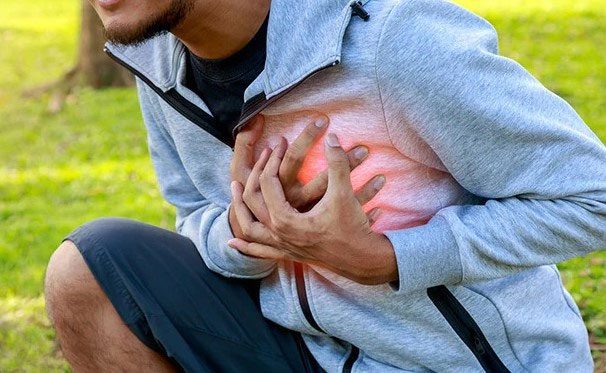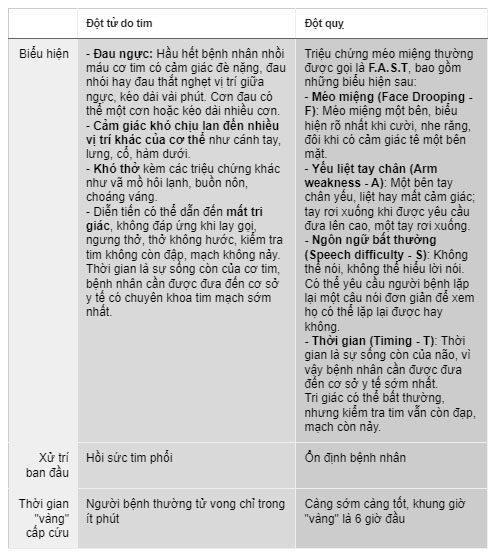According to experts, sudden cardiac death and stroke both occur abruptly and can be fatal if not identified and treated in a timely manner.
Stroke and sudden cardiac death are two distinct terms used to describe critical emergency situations in the body. The common characteristic of these two conditions is their sudden onset, which can lead to immediate death if not promptly recognized and addressed.
Doctors emphasize that distinguishing between stroke and sudden cardiac death is crucial, as the initial management and treatment protocols for patients differ significantly.

Myocardial infarction is one of the leading causes of sudden cardiac death. (Photo: iStock).
Two Emergency Conditions: Brain and Heart
Associate Professor Dr. Nguyen Huy Thang, President of the Ho Chi Minh City Stroke Association and Head of the Cerebrovascular Pathology Department at People’s Hospital 115 (Ho Chi Minh City), explains that sudden cardiac death originates from the term “sudden cardiac death” or “sudden cardiac arrest.”
A common manifestation occurs when a patient, who appears to be in a normal state, suddenly collapses due to the heart stopping abruptly.
Individuals experiencing sudden cardiac death may die within minutes if not promptly resuscitated. The primary causes of sudden cardiac death often include blockage of coronary arteries or arrhythmias.
On the other hand, stroke comes from the term “stroke”, which was previously referred to as “cerebrovascular accident”, or CVA.
There are two types of stroke: ischemic stroke and hemorrhagic stroke. However, international literature typically assumes that stroke refers to ischemic stroke. When referring to stroke due to hemorrhage, the term “intracranial hemorrhage” is used, meaning intracranial bleeding.
Stroke occurs due to the sudden blockage of blood vessels in the brain, leading to the death of brain cells and loss of neurological function. When significant blood vessels are blocked for an extended period, the volume of dead brain cells can lead to swelling, affecting consciousness and potentially causing coma.
As the condition worsens and more time elapses, compression phenomena can lead to brain herniation, affecting the brainstem, which is considered the command center for circulation and respiration. At this point, stroke can indeed result in patient death.
Regarding sudden cardiac death, Master and Doctor Giang Minh Nhat from the Cardiology Department at Gia Dinh People’s Hospital (Ho Chi Minh City) explains that the most common cause is acute myocardial infarction, where blood flow from coronary arteries supplying the heart muscle becomes obstructed. The blockage is often due to thrombosis, causing damage and death of heart tissue.
Additionally, sudden cardiac death can also result from arrhythmias in individuals who previously had no heart issues or in patients with underlying heart conditions (heart failure, cardiomyopathies, chronic myocardial ischemia, etc.).
Different Manifestations
According to Associate Professor Nguyen Huy Thang, there are two important differences between stroke and sudden cardiac death.
First, over 90% of stroke cases begin with F.A.S.T. symptoms: facial weakness, arm weakness, speech difficulties. Therefore, it can be said that without F.A.S.T. symptoms, it is unlikely to conclude that a patient has suffered a stroke.
Unlike stroke, patients still have a “golden hour” for resuscitation and are not necessarily at risk of death within the first few hours. In contrast, sudden cardiac death can occur within minutes.
Master and Doctor Giang Minh Nhat summarizes the differences in manifestations between acute myocardial infarction and stroke as follows:

According to the National Health Service (NHS) of the UK, while sudden cardiac death and stroke differ in symptoms, they share common risk factors among individuals such as being overweight, consuming excessive alcohol, smoking, lack of physical activity, and having conditions like obesity, hypertension, diabetes, or a family history of stroke/sudden cardiac death.
Therefore, to reduce the risk of experiencing sudden cardiac death or stroke, individuals should consider making lifestyle changes:
- Quit smoking if you have the habit.
- Lose weight if you are overweight or obese.
- Exercise regularly, at least 150 minutes per week.
- Follow a diet low in salt and fat, high in fiber, whole grains, fruits, and vegetables.
- Have regular health check-ups to screen and detect risks early.
The Mystery of Sudden Death in Apparently Healthy Individuals
9 Common Questions About Stroke You Should Remember
NASA Announces Results of the Experiment to Prevent Asteroids from Hitting Earth


















































